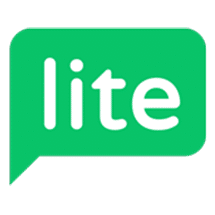Marketo vs Pardot
Hyperise integrates with 100's of sales and marketing tools, many of which are in the Marketing Automation category. With so many to choose from it's sometimes hard to know which is best, but don't worry, we've got your covered.
In this comparison guide we're going to look at the Highlights, Pros, Cons and Pricing of Marketo and Pardot. We'll also delve into the details of which offers the best personalization options within Marketing Automation, with there respective Hyperise integrations
Marketo
Pricing: Marketo pricing varies according to the size of the company, the scope of the engagement, the usage requirements, and the number of users. Generally speaking, Marketo Enterprise plans start at around $3,000 per month and may include Professional Services to help get the most out of your Marketo investment. Marketo's Cloud Enterprise plan may cost even more, depending on the features that are needed.
Vs
Pardot
Pricing: The cost of using Pardot varies depending on the plan and the size of your business. For a basic plan, Pardot's pricing starts at $1,000 per month plus $150 per user. Additional features and higher engagement levels may necessitate higher pricing. Prices may also be customized to suit each business's unique needs.
Marketo vs Pardot Highlights
Marketo and Pardot are two of the most popular marketing automation tools on the market today. They both offer a range of features to help marketers manage campaigns, track customer behavior, and generate leads.
The main difference between Marketo and Pardot is in the way they are structured. Marketo is a comprehensive sales and marketing platform, while Pardot is a separate lead generation tool.
Marketo offers a complete suite of marketing tools, including advanced email automation, lead segmentation, A/B testing, website visitor tracking, and multi-channel analytics. In contrast, Pardot focuses more on the nuts and bolts of lead generation. It features a range of features for email campaigns, landing pages, website tracking, social media integration, and more.
Other differences between Marketo and Pardot include pricing, customer support, and integration with third-party applications. Marketo is also seen as more intuitive and easier to learn, while Pardot has more advanced features and requires more technical knowledge to operate.
Overall, Marketo and Pardot are both excellent options for marketing automation, and the choice between them will depend on the features and the budget. Each has its own strengths and weaknesses, and marketers should consider their individual needs before choosing which one to go with.
Marketo vs Pardot Pros
Marketo Pros
- Marketo
- More customizable platform, with more advanced segmentation options
- Greater scalability, with higher send limits
- In-demand real-time personalization options
- Robust Salesforce integration
- Ability to add social media integration and plug-ins
- Helpful pre-built wizards and templates
- More advanced reporting and A/B testing capabilities
- Widest range of integrations with third-party apps
- Contextual and behavioral-based contact lists
Pardot Pros
- Easy to Implement: Pardot offers a straightforward and rapid implementation process, including a series of recorded training sessions and easy-to-follow guidance material that ensures a smooth setup.
- Robust Features: Pardot offers a wide variety of features, including a drag-and-drop email editor, marketing automation, automated lead nurturing, integrations, custom reporting, and more.
- User-Friendly Interface: Easily create campaigns, manage and segment leads, build custom forms, track campaigns, and generate reports in an intuitive interface.
- Affordable: Pardots subscription plans are more affordable than some of the other leading marketing automation platforms, making it an excellent value for the features it provides.
- Seamless Salesforce Integration: Pardot seamlessly integrates with Salesforce, giving users the ability to automatically sync data in real-time between platforms.
Marketo vs Pardot Cons
Marketo Cons
- Higher cost than Pardot
- Longer Implementation timeline than Pardot
- Lacks multi-touch tracking features
- Lacks lead scoring
- Less advanced automation capabilities than Pardot
- Less user-friendly form-building module
- Slightly Lackluster email editor
- Less capability for dynamic content
- User interface requires additional time for learning
Pardot Cons
- Higher Costs: Pardot is generally more expensive than Marketo, so users preparing to make the switch should consider their budget constraints first.
- Fewer Tracking and Reporting Options: Marketo offers a variety of tracking and reporting features that Pardot doesn't provide.
- Lack of Native Automation: While Pardot does have some automation capabilities, they aren't as extensive or advanced as Marketo's.
- Limited Template Building Options: Unlike Marketo, Pardot's editing and building capabilities for creating templates are more limited.
- Limited Segmentation Options: Pardot does not offer as much granularity when it comes to segmentation options.
Marketo & Pardot Hyperise Integrations
Marketo uses the HTML code embed method to integrate with Hyperise, giving a simple way to add personalized images to your messages.
Marketo makes the following data points available to Hyperise, to enable personalization in images used in outreach and linked out to your personalized website landing pages.
- Using business Email passed from Marketo, Hyperise is able to enrich business logo and website screenshots. In some cases, with a business Email we're also able to enrich profile images, subject to the business email having a publicly available profile.
- Using business Website passed from Marketo, Hyperise is able to enrich business logo and website screenshots.
- Business name
- Job title
Marketo Integration Guide
Pardot uses the HTML code embed method to integrate with Hyperise, giving a simple way to add personalized images to your messages.
Pardot makes the following data points available to Hyperise, to enable personalization in images used in outreach and linked out to your personalized website landing pages.
- Using business Email passed from Pardot, Hyperise is able to enrich business logo and website screenshots. In some cases, with a business Email we're also able to enrich profile images, subject to the business email having a publicly available profile.
- Using business Website passed from Pardot, Hyperise is able to enrich business logo and website screenshots.
- Business name
- City
- State
- Country
- Zip
- Category
Pardot Integration Guide
 vs
vs  vs
vs  vs
vs  vs
vs  vs
vs  vs
vs 

 vs
vs  vs
vs 
 vs
vs  vs
vs  vs
vs  vs
vs  vs
vs  vs
vs  vs
vs  vs
vs 











 vs
vs  vs
vs  vs
vs  vs
vs 
























